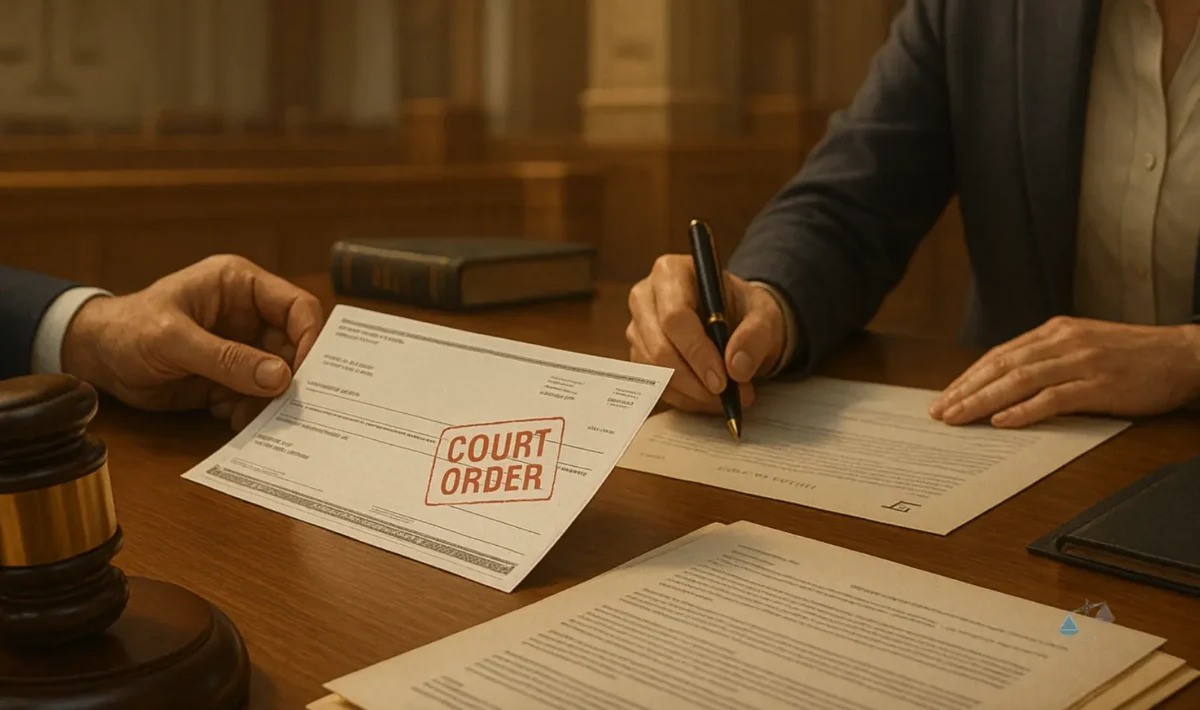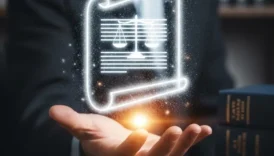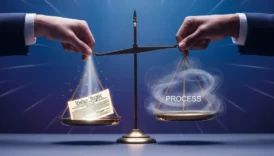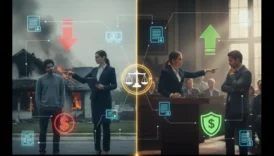Legal Garnishment: Ultimate Legal Guide

- Legal Garnishment: Ultimate Legal Guide
- Meaning of Garnishment in Law
- Key Parties Involved
- The Legal Foundation of Garnishment
- Core Legal Principles
- Federal vs. State Regulation
- Types of Legal Garnishment
- 1. Wage Garnishment
- 2. Bank Account Garnishment
- 3. Property or Asset Garnishment
- 4. Tax and Government Garnishment
- How Garnishment Works in Practice
- Step-by-Step Breakdown
- Why Legal Garnishment Matters
- Key Benefits
- Societal and Legal Importance
- Limitations and Debtor Protections
- Major Legal Protections for Debtors
- Common Challenges and Risks
- Evolving Trends
- FAQ — Legal Garnishment
- What is legal garnishment in simple terms?
- How does wage garnishment work?
- Can my entire paycheck be garnished?
- What types of debts can be collected through garnishment?
- Are there any types of income that cannot be garnished?
- Can I stop a garnishment once it starts?
- What happens if my employer ignores a garnishment order?
- Can multiple garnishments occur at once?
- Does garnishment affect my credit score?
- Why is legal garnishment important?
- Author Note
Simple definition of legal garnishment: a lawful process by which a creditor collects money directly from a debtor’s wages, bank accounts, or other assets to satisfy a judgment debt. Garnishment allows courts to intercept funds owed to the debtor and redirect them to the creditor through legal authority.
“Garnishment is the legal detour your paycheck takes when debts go unpaid.”
Meaning of Garnishment in Law
Legal garnishment is a judicial remedy used when someone owes money and fails to pay voluntarily. Instead of waiting for repayment, the creditor asks the court to issue a garnishment order, directing a third party — usually an employer or bank — to transfer funds from the debtor’s income or accounts to the creditor.
This process ensures that court judgments are enforceable and prevents debtors from hiding or neglecting obligations.
Garnishment applies primarily to:
- Wages (income from employment)
- Bank accounts or savings deposits
- Rental income or commissions
- Tax refunds or insurance settlements (in limited cases)
Key Parties Involved
| Role | Description |
|---|---|
| Creditor (Judgment Holder) | The person or entity owed money. |
| Debtor (Judgment Debtor) | The person who owes the debt. |
| Garnishee | The third party (employer or bank) ordered to withhold money. |
| Court | Issues and enforces the garnishment order. |
In most jurisdictions, the creditor must first obtain a judgment proving the debt’s validity before garnishment begins. Once the court authorizes it, deductions continue until the full amount — including interest and legal costs — is satisfied.
The Legal Foundation of Garnishment
Garnishment law is rooted in civil judgment enforcement, ensuring that valid debts are not ignored. Each jurisdiction defines its own limits and procedures, often guided by federal or state consumer-protection statutes.
Core Legal Principles
- Judicial Oversight: Garnishment always requires a court order — self-help collection is illegal.
- Notice and Due Process: The debtor must be informed and given a chance to object or claim exemptions.
- Limits on Amount: Laws restrict how much of a person’s wages can be garnished, preventing undue hardship.
- Exemptions: Some income sources (e.g., Social Security, disability benefits) are protected.
- Termination: Garnishment ends once the debt, interest, and court costs are fully paid.
Federal vs. State Regulation
In the United States, federal law — mainly the Consumer Credit Protection Act (CCPA) — sets broad limits:
- No more than 25% of disposable earnings may be garnished per pay period.
- States may impose stricter protections (some limit garnishment to 15% or less).
Other nations follow similar frameworks, requiring court supervision and proportional deductions to protect both creditor rights and debtor dignity.
Types of Legal Garnishment
Different forms of garnishment exist depending on the nature of the debt and the source of payment.
Each type follows the same principle: a court authorizes seizure of funds from a third party rather than directly from the debtor.
1. Wage Garnishment
The most common form. An employer deducts a percentage of the employee’s earnings each pay period and forwards it to the creditor.
Typical debts recovered through wage garnishment include:
- Court judgments for unpaid loans
- Credit card or medical debt
- Child support or alimony arrears
- Tax obligations
2. Bank Account Garnishment
Used when the debtor has funds in a checking or savings account. The creditor can request the court to “freeze” the account and release part or all of the balance.
However, exempt funds (like government benefits) cannot be seized.
3. Property or Asset Garnishment
In certain jurisdictions, movable property (vehicles, equipment) may be seized and sold to satisfy debts.
This process requires additional court approval and often involves law enforcement.
4. Tax and Government Garnishment
Government agencies may garnish wages or refunds without a court order in limited cases — for unpaid taxes, student loans, or federal penalties.
However, debtors are still entitled to notice and appeal rights.
How Garnishment Works in Practice
Legal garnishment operates through a court-supervised chain involving the creditor, debtor, and a third party (the garnishee). The process balances two competing interests: enforcing valid debts and protecting a debtor’s minimum living resources.
Step-by-Step Breakdown
| Stage | Description |
|---|---|
| 1. Judgment | The creditor obtains a court judgment confirming the debt. |
| 2. Garnishment Application | The creditor petitions the court for a garnishment order, naming the garnishee. |
| 3. Notice to Debtor and Garnishee | Both receive written notification and an opportunity to contest or claim exemptions. |
| 4. Withholding Begins | The employer or bank withholds the specified amount from the debtor’s income or account. |
| 5. Payment Distribution | The withheld funds are sent to the creditor, often through the court clerk. |
| 6. Termination | Once the debt is paid in full (including interest and costs), the garnishment order is lifted. |
Throughout the process, transparency and due process are essential. If a garnishee fails to comply (for example, an employer ignoring the order), they may be held personally liable for the amount that should have been withheld.
Why Legal Garnishment Matters
Legal garnishment serves as a critical enforcement tool in modern civil law, ensuring that court judgments hold real meaning. Without garnishment, creditors would have limited recourse to collect lawful debts, and judicial decisions could become symbolic rather than practical.
Key Benefits
- Judgment Enforcement: Transforms a court order into real payment.
- Structured Repayment: Allows gradual debt satisfaction without total financial ruin.
- Fairness to Creditors: Prevents deliberate evasion or asset hiding.
- Consumer Protection: Built-in caps and exemptions maintain debtor dignity and prevent exploitation.
Garnishment also promotes economic accountability. By upholding contractual and financial obligations, it reinforces public trust in lending systems, ensuring that borrowers and lenders operate under predictable, enforceable rules.
Societal and Legal Importance
- In employment law, it obliges employers to honor lawful wage deductions.
- In family law, garnishment guarantees child support payments.
- In tax law, it ensures recovery of unpaid public funds.
Thus, garnishment isn’t merely punitive — it’s a mechanism of balance, aligning debt enforcement with humanitarian limits.
Limitations and Debtor Protections
Despite its importance, garnishment is tightly regulated to prevent abuse and economic hardship. Legislators and courts impose strict procedural and substantive limits.
Major Legal Protections for Debtors
- Income Exemptions: Only a portion of disposable income may be garnished (usually ≤25%).
- Protected Benefits: Social Security, veterans’ aid, disability payments, and certain pensions are exempt.
- Notice and Objection Rights: Debtors can challenge the amount or claim hardship.
- Employment Protections: Employers cannot fire an employee solely because of a single garnishment.
- Bank Account Protections: Certain minimum balances are shielded from seizure to cover essential expenses.
Common Challenges and Risks
- Multiple Garnishments: Overlapping orders can exceed legal limits, requiring court adjustment.
- Administrative Errors: Incorrect withholding can harm both debtor and creditor.
- Predatory Practices: Unscrupulous debt collectors may threaten illegal garnishment without court approval.
Evolving Trends
Digital banking and gig-economy work complicate traditional garnishment enforcement. Courts increasingly adapt statutes to cover online income sources, payment apps, and electronic wage platforms while preserving constitutional due process.
Ultimately, legal garnishment remains a delicate compromise between financial responsibility and human survival — a reminder that justice must enforce obligations without stripping dignity.
FAQ — Legal Garnishment
What is legal garnishment in simple terms?
Legal garnishment is a court-ordered process allowing a creditor to collect unpaid debts directly from a debtor’s wages, bank account, or other assets through a third party such as an employer or financial institution.
How does wage garnishment work?
The creditor obtains a court judgment, and the court orders the debtor’s employer to withhold a portion of the debtor’s paycheck. The deducted funds are sent directly to the creditor until the debt is fully paid.
Can my entire paycheck be garnished?
No. Federal and state laws limit how much can be taken. Under the U.S. Consumer Credit Protection Act (CCPA), no more than 25% of disposable earnings may be garnished per pay period — and some states have stricter limits.
What types of debts can be collected through garnishment?
Common debts include unpaid loans, medical bills, credit cards, child support, alimony, taxes, and defaulted student loans. Each category may follow slightly different rules and limits.
Are there any types of income that cannot be garnished?
Yes. Exempt sources often include Social Security benefits, veterans’ payments, unemployment compensation, and certain pensions. These protections prevent financial collapse for low-income or retired individuals.
Can I stop a garnishment once it starts?
Possibly. Debtors can file a motion to reduce, suspend, or terminate garnishment by proving financial hardship or legal error. Bankruptcy filing also halts most garnishment actions under the automatic stay provision.
What happens if my employer ignores a garnishment order?
The employer (garnishee) can become legally liable for the unpaid amounts that should have been withheld. Courts can impose penalties or fines for noncompliance.
Can multiple garnishments occur at once?
Yes, but total deductions cannot exceed the maximum percentage allowed by law. Courts usually prioritize child support and tax obligations over commercial debts.
Does garnishment affect my credit score?
Yes, indirectly. A garnishment order typically appears after a judgment, which damages credit standing. However, making consistent payments through garnishment may eventually help restore creditworthiness.
Why is legal garnishment important?
Because it enforces lawful debts while maintaining fairness. Garnishment ensures creditors are paid and debtors are treated with dignity through regulated limits and due process.
Author Note
Author: Legal Terms Editorial Team
Last Updated: October 2025






